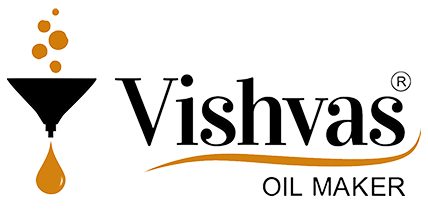
An oil press machine is an excellent tool for extracting pure and healthy oils from seeds and nuts. Whether you are using it for home purposes or commercial production, proper preparation before starting the machine is essential. Correct preparation not only ensures maximum oil yield but also increases the machine’s life and maintains the quality of the extracted oil. If the oil press is operated without following the right steps, it may lead to damage, reduced efficiency, or poor-quality oil.
In this blog, we will discuss in detail the preparations that need to be done before operating an oil press machine.
1. Choose the Right Location
Before operating the oil press, selecting the right installation area is the first and most crucial step.
- Flat Surface: Place the oil press on a stable and flat surface to avoid vibrations and imbalance during operation.
- Clean Environment: Make sure the surroundings are dust-free and dry, as external contaminants can affect the oil quality.
- Proper Ventilation: The machine should be kept in a well-ventilated area to prevent overheating and to make the environment comfortable for the operator.
- Adequate Space: Leave enough space around the machine for easy handling of raw material, collection of oil, and cleaning after use.
2. Check the Power Supply
Most Domestic oil press machines run on electricity, while some models may be manual or powered by other means. For electrical machines:
- Correct Voltage: Ensure that the power supply matches the voltage requirement of your machine (e.g., 220V or 110V).
- Stable Connection: Avoid using loose connections or damaged sockets. A dedicated power line with a stabilizer is recommended.
- Grounding: Proper earthing or grounding is necessary to prevent electric shocks.
- Backup Power: In case of frequent power cuts, having a backup power supply ensures continuous operation.
3. Inspect the Machine
Before starting the oil press, a thorough inspection helps prevent operational issues.
- Check Assembly: Ensure that all parts like the pressing chamber, hopper, and oil outlet are properly assembled.
- Tighten Bolts and Screws: Loose components can cause vibration and uneven pressing.
- Lubrication: If recommended by the manufacturer, lubricate specific parts to ensure smooth functioning.
- Test Run: Perform a dry run without seeds to check if the machine is operating smoothly.
4. Clean the Machine
Hygiene is very important in oil extraction. A clean machine ensures that the oil remains pure and free from contamination.
- Remove Dust: Wipe the outer and inner parts to remove dust particles.
- Clean Residues: If the machine was used previously, ensure no leftover oil, seeds, or residue are inside the chamber.
- Use Food-Safe Cleaner: Wash detachable parts with warm water or a food-grade cleaner if necessary. Make sure they are dried properly before reassembling.
5. Prepare the Raw Materials
The seeds or nuts you use play a significant role in determining oil yield and quality. Proper preparation of raw materials is crucial.
- Quality Seeds: Always choose high-quality, clean, and mature seeds or nuts. Avoid damaged, moldy, or insect-infested raw materials.
- Cleaning: Remove stones, dust, or other impurities, as they can damage the machine and contaminate the oil.
- Drying: Seeds should be adequately dried to the required moisture content. Excess moisture reduces oil yield and causes clogging.
- Roasting (If Required): Some seeds like peanuts or sesame may require light roasting before pressing. Roasting enhances flavor and increases yield.
- Sorting: Ensure uniformity in size for smooth pressing. Mixing different seeds without proper preparation may affect oil quality.
6. Pre-Heating the Machine
Many modern oil presses come with a pre-heating option. Pre-heating ensures efficient oil extraction.
- Set Temperature: Adjust the temperature according to the type of seed. For example, sunflower and sesame seeds may need slightly higher temperatures than coconut or flaxseed.
- Warm-Up Time: Allow the machine to preheat for 5–10 minutes (or as per the manufacturer’s guidelines). This step softens seeds and prevents clogging.
7. Keep Collection Containers Ready
Before starting the operation, arrange containers for oil and seed cake collection.
- Oil Container: Use a clean, food-grade, stainless steel or glass container for collecting oil. Plastic containers are not recommended for hot oil.
- Residue Container: Keep a separate container to collect the seed cake or residue. This byproduct can be used as cattle feed or fertilizer.
- Filter Cloth (Optional): If you want cleaner oil immediately, place a filter cloth or mesh over the oil collection container.
8. Safety Precautions
Operating an oil press involves working with heat and mechanical parts, so safety is vital.
- Protective Gear: Wear gloves when handling hot parts, and keep loose clothing or jewelry away from moving components.
- Fire Safety: Keep the area free from flammable materials, and ensure a fire extinguisher is accessible.
- Children Safety: Do not allow children near the oil press during operation.
- Follow Manufacturer’s Manual: Always adhere to safety instructions provided with your machine.
9. Trial Run with Small Quantity
Before loading the machine with a large batch, it is advisable to start with a small amount of seeds.
- This helps check if the machine is working properly.
- Ensures the temperature is correct for the specific seed type.
- Prevents wastage in case adjustments are needed.
10. Record Keeping and Monitoring
For commercial oil press use, keeping records is important.
- Input Quantity: Note the amount of seeds used.
- Oil Output: Record the quantity of oil produced for yield analysis.
- Machine Hours: Keep track of operation hours for timely maintenance.
- Temperature and Settings: Maintain records of temperature settings for different seeds to improve consistency.
Conclusion
Operating an oil press machine is simple but requires systematic preparation to achieve the best results. From selecting the right location, ensuring a proper power supply, and cleaning the machine, to preparing seeds and per-heating the press, every step contributes to efficient oil extraction. Skipping these steps can affect oil quality, reduce yield, and shorten the machine’s lifespan.
By investing a few extra minutes in preparation, you not only safeguard your machine but also ensure that you produce fresh, pure, and high-quality oil every time.








